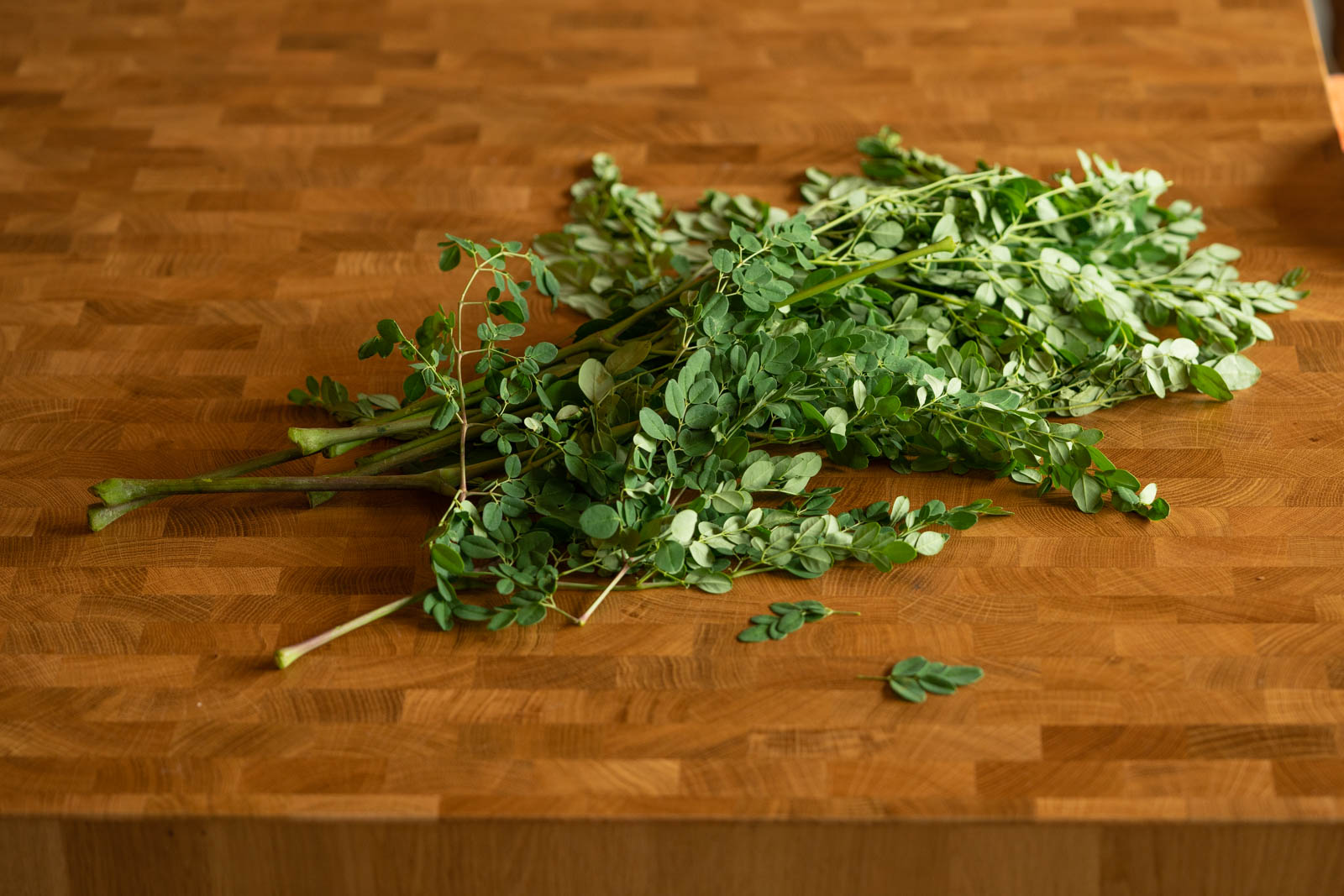If you’ve ever been lucky enough to stumbled upon fresh moringa (Moringa oleifera) leaves at the market, you’d surely wonder what they were doing in the vegetable section. These thin branches embellished with all these tiny leaves look like they came straight off a tree and you’d never think anyone would just eat leaves straight off a tree, but these you can, and you should.
The moringa tree, also known as horseradish tree or drumstick leaves, has many, many names because of its popularity throughout Asia, Africa and Central & South America. Unsurprisingly, it’s super common in Indian and South Asian cuisines. Moringa has slowly making its way to the States as a superfood primarily in powder form, but you can find fresh moringa leaves at many ethnic markets. Look for younger tender leaves if you want to use them raw. There’s a lovely earthy subtle slightly peppery flavor, much like coriander leaves.

Every part of the moringa plant are edible except the stems. The fruit pods and leaves are the more popular parts and the leaves are the most nutritious part: rich in vitamins B and C, super beta-carotene, iron, calcium, manganese and protein. According to a US manufacturer of moringa supplement, moringa has more calcium than milk, vitamin C than oranges, potassium than bananas, and vitamin A than carrots! Definitely a supa-super food!
The moringa is a powerful plant: in powder form if can be used effectively as soap and its seeds can be made into water purifying cakes. In many parts of the world there are hopes for the moringa to combat malnutrition.
Though data is limited, there are warnings for over-consumption, medication risks, and those who are pregnant. As always, please consult your doctor first!
How To Prep and Cook with Moringa Leaves
Wash it and strip the leaves: don’t use the stem. Note that this will probably be the most time-consuming thing you do.
You can dry it up and store it like tea, or even crush it into a powder. In the Philippines moringa is called mallungay; my dad likes to put them in mungo or mung bean stew. You can use them in many ways, much like any soft leafy green such as spinach or basil. Check out our fresh moringa tea and moringa green onion pancakes recipes below for inspiration!







